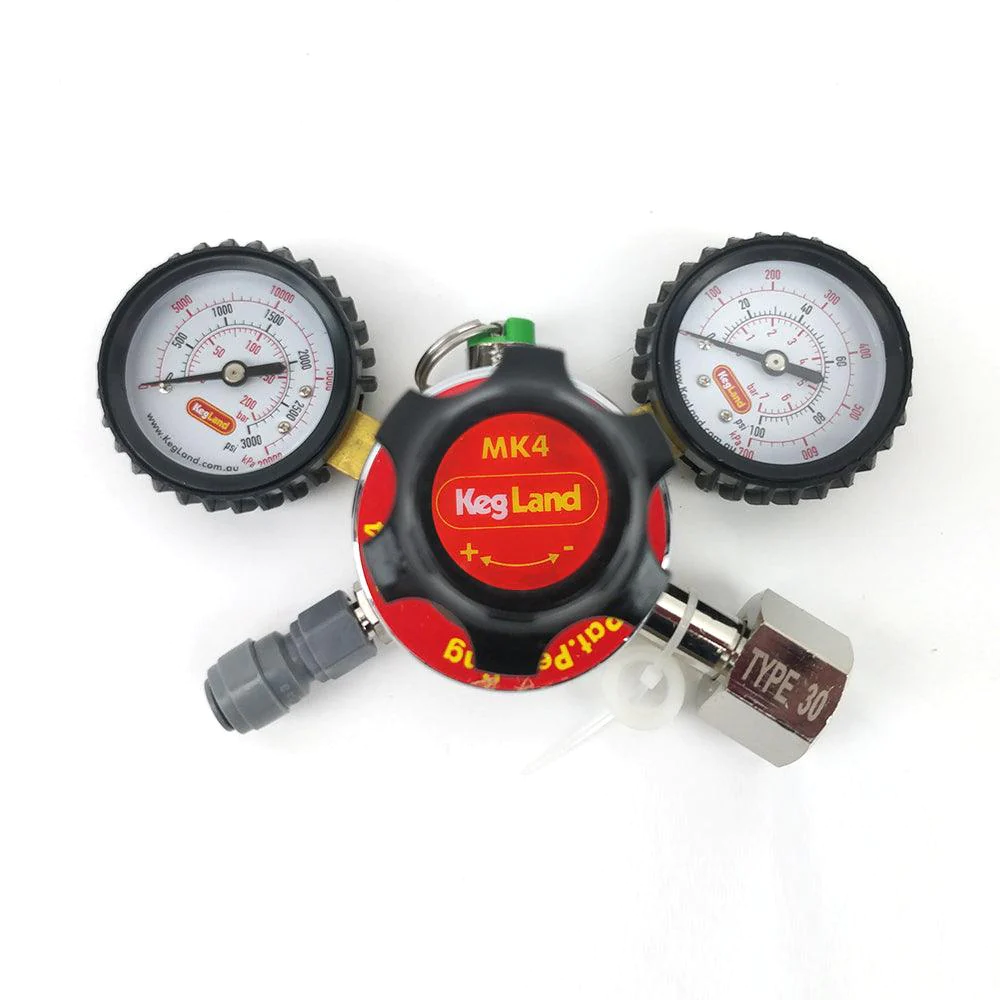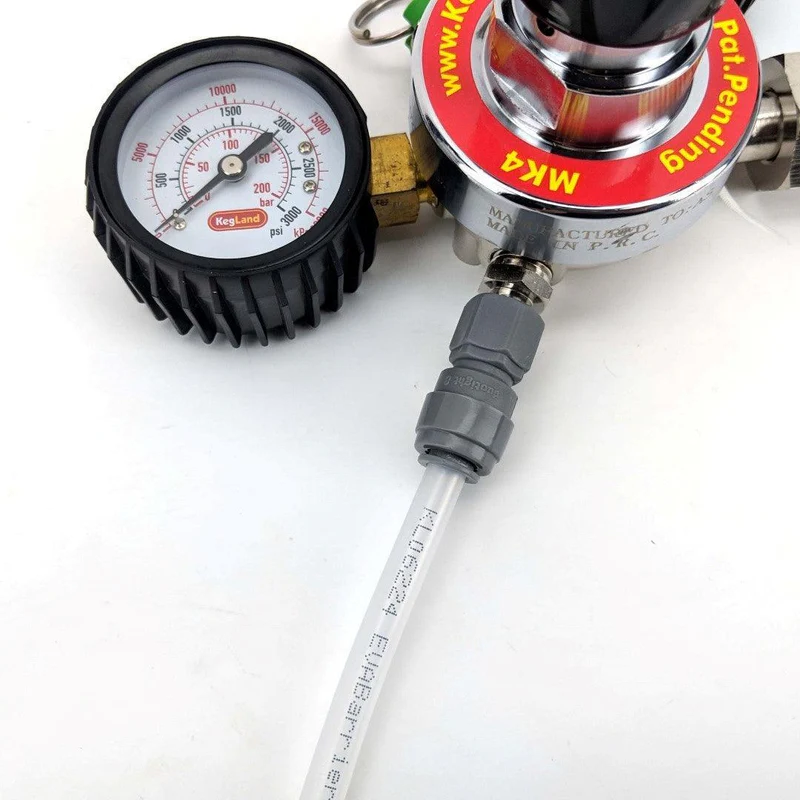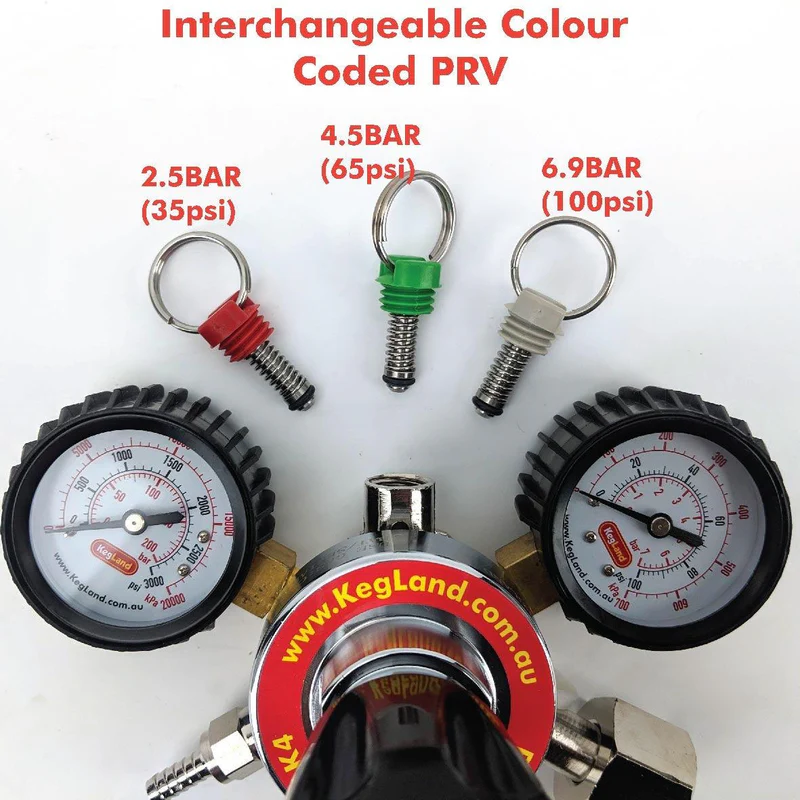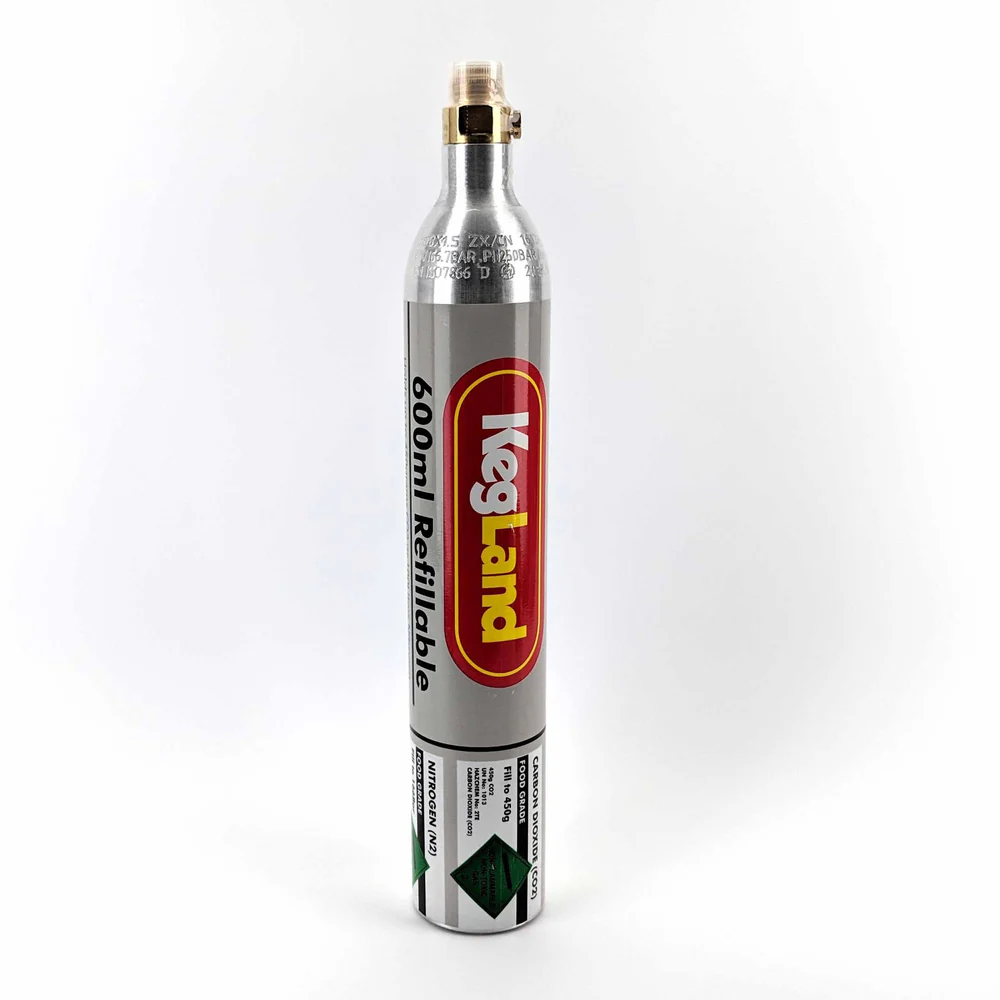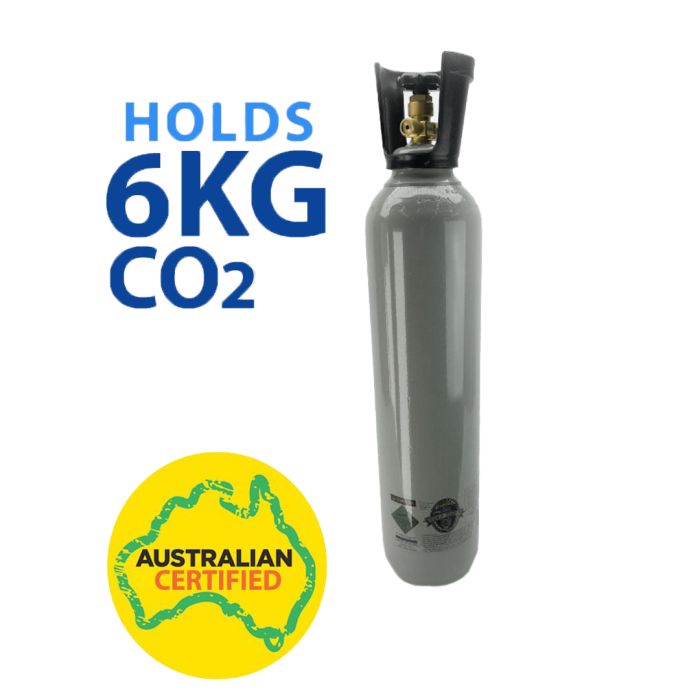The 2.6kg CO2 cylinder is our most popular option, offering a perfect balance of portability and capacity. It’s compact enough to take camping or to a party, fits easily inside a kegerator, or hangs securely in the bracket included with our Keg Masters. Despite its size, it’s substantial enough to dispense many kegs. Owning your CO2 cylinder is typically more cost-effective than renting from a gas supplier for periods exceeding 12 months.
Features:
- Australian Standard Approved
- Capacity: 2.6kg of gas
- Dimensions: 47cm high x 14cm diameter
- Includes a carry handle for easy transport and valve protection
- Fits in Keg Master Series 2 and Series 3 Kegerators without reducing keg capacity
You’ll generally use about 6g of CO2 per liter for carbonation or dispensing from a kegerator. For homebrewed beer, you can carbonate and dispense approximately 200 liters or 10 x 19L kegs. For pre-carbonated commercial beer, you can dispense around 400 liters or 8 x 50L kegs.
Refills
Empty cylinders can be refilled by the Aardvark and Arrow Brewery.
Typically this will cost between $20-35 for a 2.6kg Cylinder and $40-70 for a 6kg Cylinder.
These cylinders come with a 10 year approved life span. After this time for CO2 fillers to be able to fill your bottle, you will need to get it hydro statically tested for your safety and theirs while filling it for you.
This can easily be done at a local fire station or a certified gas mechanic/supplier.
To avoid running out of gas prematurely, it is crucial to check for leaks and perform a pressure test. Watch the video below for guidance on how to do this.
Always ensure the cylinder is operated in an upright position; never invert it

 0466 120 139
0466 120 139